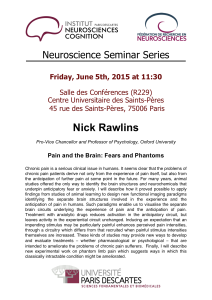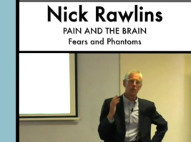Neuroscience Seminar Series:
Nick Rawlins – Pro-Vice Chancellor and Professor of Psychology, Oxford University
‘Pain and the Brain: Fears and Phantoms’
Chronic pain is a serious clinical issue in humans. It seems clear that the problems of chronic pain patients derive not only from the experience of pain itself, but also from the anticipation of further pain at some point in the future. For many years, animal studies offered the only way to identify the brain structures and neurochemicals that underpin anticipatory fear or anxiety. I will describe how it proved possible to apply findings from studies of animal learning to design new functional imaging paradigms identifying the separate brain structures involved in the experience and the anticipation of pain in humans. Such paradigms enable us to visualise the separate brain circuits underlying the experience of pain and the anticipation of pain. Treatment with anxiolytic drugs reduces activation in the anticipatory circuit, but leaves activity in the experiential circuit unchanged. Inducing an expectation that an impending stimulus may be particularly painful enhances perceived pain intensities, through a circuitry which differs from that recruited when painful stimulus intensities themselves are increased. These kinds of studies may provide new ways to develop and evaluate treatments – whether pharmacological or psychological – that are intended to ameliorate the problems of chronic pain sufferers. Finally, I will describe new experimental work on phantom limb pain which suggests ways in which this classically intractable condition might be ameliorated.

